One of the ever pressing matters for graphic designers is how to display our work, especially work that is best experienced by interacting with it or seeing it at 100% size and reality. With online and PDF portfolios becoming the norm, it is increasingly hard to convey the experience of flipping through a book or magazine, or holding a bottle of some fancy vodka, or staring at a poster half the height of a human being — of course, we have figured out how to show posters, through the preeminent Finger Hold.
Arms outstretched, they nip the work gingerly between finger and thumb. Who are they? Is it the same person each time — some kind of professional poster holder-upper who, seizing their chance, has carved out an unlikely career in the graphic display business?
— Patrick Burgoyne over at the Creative Review blog
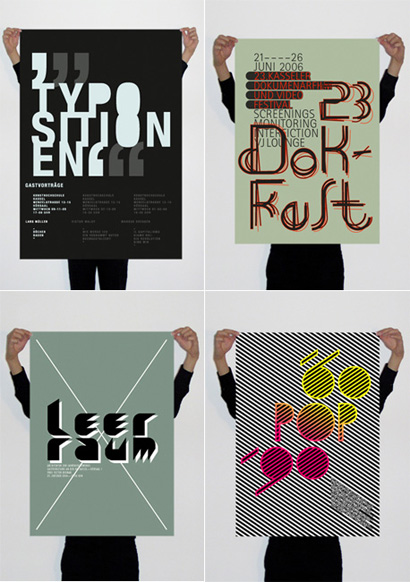
Poster work by Michalt Slawek, as shown at Creative Review.
Now a ridiculed cliché, the Finger Hold is one of the few ways of portraying the relative size of a poster and capture a hint of the texture of the paper and the printing process. This is certainly better than showing a flat digital file that might as well be a postcard. Of course, posters could be photographed in situ, but then you lose control of the lighting and who knows what may be beyond, around and underneath the poster once it has been placed. The Finger Hold also allows to add some personal flair — which may be what irks fellow designers — if you take the picture in your loft office and show the exposed brick wall, or it lets you show off your Asian designer jeans that cost as much as the production of the poster. The Finger Hold is not perfect, but it works and is popularly used.
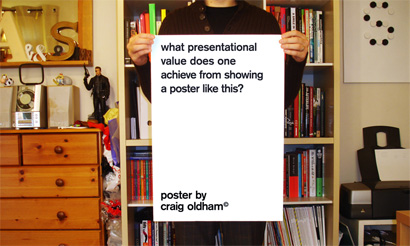
British designer Craig Oldham questions the Finger Hold.
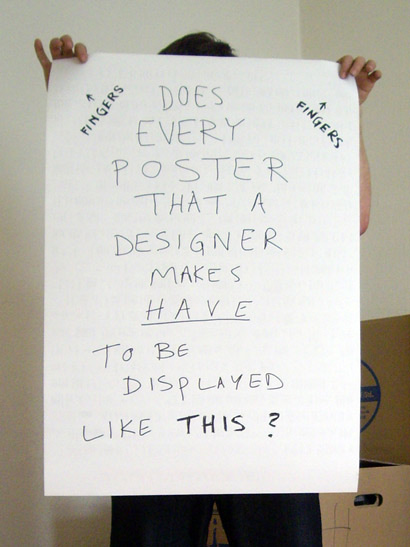
Craig Robinson from Flip Flop Flyin provides a clear diagram of the problem.
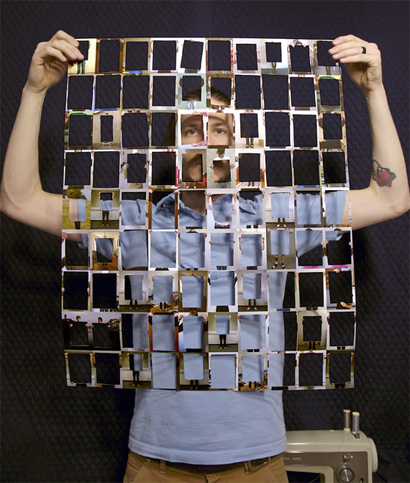
JK Keller took a bunch of these images, made a poster out of it, and then cut the posters. So incestuous.
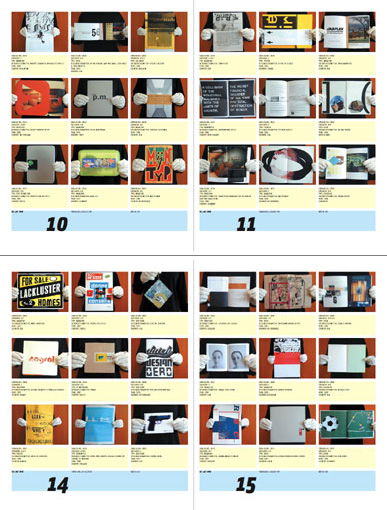
My theory is that issue 54 of Emigre started the trend back in 2000 when they showcased this “mysterious” collection of design by white-gloving each piece.
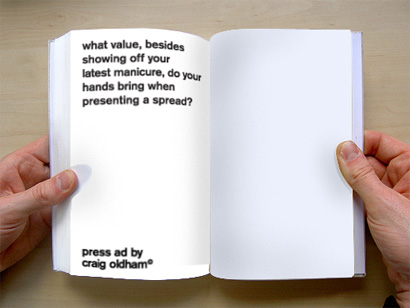
I see little reason to get your mittens thumbing over a spread of work that can to do all the talking alone.
— Craig Oldham still questioning
So, with the conundrum solved (for the most part) for posters, there is a new trend emerging that takes advantage of the simplicity of shooting a short video, uploading it to any of the numerous services that hosts the video and lets you embed the daylights out of it anywhere you want. The Video Flipthrough allows designers to showcase editorial work as it’s usually experienced on a first interaction: A quick flip, stopping at spreads that capture the attention. This method has the benefit, as the Finger Hold, of showing the relative size of the project in contrast to someone’s hands; it can also portray the quality of the printing and the paper; and, most importantly, you can show almost all of the pages in a short period of time — something you can’t do when you are painstakingly shooting single spreads hoping the book or magazine doesn’t close shut at mid exposure, and where no viewer will sift through 100 photographs to get a sense of the book. The Video Flipthrough packs the most experiential-punch-to-time-spent-viewing ratio. It’s not perfect, of course, as typographic details are nearly impossible to capture and you are beholden to the manual abilities of the flipthrougher, but as a way to showcase editorial work in this Web 3.0 world — yes, bye-bye Web 2.0! — it is effective and proportionate to the amount of attention anyone is willing to spend viewing a single online project online.
Following are a few Video Flipthrough examples:
The designer flipping through Weird Weight by Andy Dixon.
A shaky, Ken Burns-like flipthrough of Rebel Visions — not too enjoyable an experience.
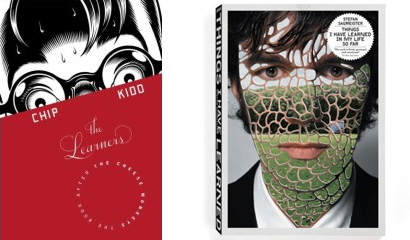
Flat images of Chip Kidd’s The Learners and Stefan Sagmeister’s Things I have learned in my life so far. Unless you know, it’s impossible to tell that the red field in Chip’s book is the jacket, or that Stefan’s book is die-cut and is comprised of several little books.
Bennett Holzworth (of the recently retired Be A Design Group) showing Stefan Sagmeister’s Things I have learned in my life so far.
Bennett flips through Chip Kidd’s The Learners.
Someone going through Irma Boom’s books like if his house were on fire.
Unstoppable, Bennett showcases Modern Dog’s book.
Flipthrough of Ellen Lupton’s Graphic Design: The New Basics.
And the Flipthrough to end all Flipthroughs, Marion Bataille’s mock-up of her upcoming eye-popping book, ABC3D.






Until I bought it and opened it, I thought, "Why the hell does Stefan have a lizard face?" Then it all made sense.
On May.07.2008 at 11:07 AM